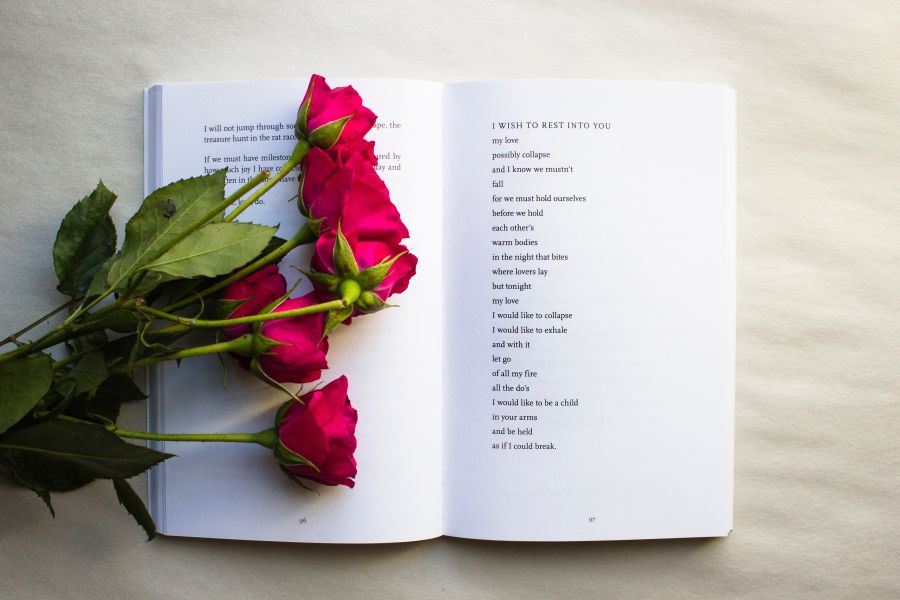小学英语的教学设计范文1
一、教材分析
Unit 5 这一单元的主题是Numbers,学习数字、交通工具、玩具、表达名词的复数,一首数字歌和学习四个以字母暗线编排的新单词insect、ink、 jacket和jeep,以及含有这四个单词的一首儿歌等内容。由于内容较多,本单元计划安排四课时。Lesson 1 为这一单元的第一课时,学习数字 one two three four five ,知道各表示的是数字几,同时学习,火车,汽车,球 洋娃娃,玩具熊的英文表达法,通过学习能够根据图片快速地说出英文单词,以及与数字有关的表达 How many。对于数字1~5的英语说法,大多数孩子较为熟悉,应注意正音,特别是three |θri:| 较难掌握。在有意义的情意中,学习How many句型,理解数字与“多少”的联系,为后面学习名词的复数形式作铺垫。
二、学生状况分析
一部分孩子在幼儿园或学前班接触过少量英语,大多数孩子属初识英语。这些一年级的孩子天真、活泼、大胆、热情、积极,对英语学习兴趣浓烈,他们喜欢说、唱、玩、演、做游戏、比赛等活动,且乐于表现自己。但他们的注意力不易持久,无意注意占主要,所以宜尽量采用活动式教学法并贯穿整个教学过程。通过近三个月的学习,这些孩子已经掌握了一些简单的日常问候用语,能大胆地模仿并进行跟读;能听懂一些简单的课堂用语,并作出相应的反应;并能就个人的特征,如名字、性别等进行简单介绍;学习了颜色、学习用品、动物、水果、五官部分等单词,能表达问候、致谢,有浓厚的学习英语的兴趣、有一定的自信心。
Numbers
教学目的:
1﹑学习数字 one two three four five ,知道各表示的是数字几,同时学习,火车,汽车,球 洋娃娃,玩具熊的英文表达法,通过学习能够根据图片快速地说出英文单词。
2、能够听懂表示询问数量的功能句:How many ……?并能够根据询问用数字one ,two ,three……来回答。
3、学生能够快速的指读朗读新单词。
4、小游戏巩固所学的新单词,同时使学生感到在快乐的学习英语,为今后学习英语建立兴趣。
教学重点:
学习单词one、 two 、three 、four、 five、train、ball、 doll 、car 、teddy bear,掌握其意思并能够认读。
能够听懂表示询问数量的功能句,并做出回答。
教学难点:
区分单词ball、 doll 、掌握其读音,不混淆。
教学准备:
ppt,火车及汽车的喇叭声、实物教具。
教学过程:
一、热身(sing a song ——Happy birthday song)
T:刚才唱的歌是为Sam 庆祝生日,那么你们看这是谁?
出示Mocky的图片。问,Who is this?
S: Mocky
T: Mocky的生日也要快到了,I want to buy some gifts for him ,can you help me ? S: Yes!
二、呈现新知
T: 我们一起去商店为Mocky挑选礼物,但商店离这里很远,我们选择什么交通工具呢?listen!
(一)car train
1.教师播放汽车的喇叭声。
估计:学生很快地说出汽车。
对策:T: Yes ,by car,同时教师出示小汽车的图片,教读 car ,指生读,教师加动作做开汽车的状态,di di car ,di di car,
T: the store is too far, so we must by train get there
2.教师播放火车的喇叭声,同时拿出单词卡片教读train ,
a先教师教读几遍,b分男_读,c教师双手放在身体两边做车轮转动 轰隆隆 train, 轰隆隆 train , d di di car, 轰隆隆 train
3.带领全班复习这两个单词。
过渡:Look,we are at the store gate, Let us go in and have a look!看我们来到了商店门口,让我们快进去看看吧!
(二)one two three four five
1、播放课件(商店大门敞开)
T: what can you see?
估计:学生会说出很多的中文.
学过的单词可能会用英文说出。
对策:教师引导:I can see an apple.
如果此时学生说出的是几个物品,教师要告诉学生一个,用a,an 多了要在单词后加s。
同时教师可以举例说明 bananas
2、教师指着苹果问:what ‘s this ? s: apple
教师:How many apples ? (教师多说几遍,并告知学生意思,使学生形成初步的意识))
估计:有的学生会说出中文一个,有的可能会说英文的one.
T;There is one apple 引出 one .同时出示单词卡片 one.
教师教读单词,指生朗读,同时伸手表示数字1。
3、教师指着屏幕问:How many cars?
教学单词 two ,请学生听老师的发音,带领学生朗读,看图片进行朗读,教学顺口溜:one one two,(还可以让学生伸手记忆)
4、同法学习three, four,five
5、运用手势复习1——5的英文表达法,同时激起学生表达的_。
6、play a game ____Lishen and show your fingers
Let’s play a game .
规则:当老师说完数字后,生立即举起自己的手指,举得最快并且对的同学可以得到一个笑脸。
(目的 巩固数字1-5的表达。)
(三)doll ball teddy bear
1、教师出示皮球 look! 教师一边拍球一边数数,带领学生数数。
请个别学生试拍(要求边拍边数)
2、教师举起皮球:this is a ball
请学生跟读,让学生感知b的发音,然后记忆。
3、看屏幕:How many balls ?
How many cars ?
How many ……?
T: Who can ask other any questions ?(Who want to be a little teacher?)
估计:学生会说出,但单词后的复数形式不会加上。
不会问
对策:教师可以指导学生加上s,并教授读音。
教师引导如教师说:how ……让学生说后面的,降低孩子说的难度。
T: (拿着洋娃娃)I am a girl ,so I like doll, (我喜欢娃娃),You are a girl , do you like doll?(指着一名学生询问)
4、请学生摸摸洋娃娃,并跟读doll,齐读,小组读
Guess how many dolls ?(关掉大屏幕)
教师用yes 或者no来回答。激发学生参与的兴趣。
教师出示; 区分ball 和 doll
A 从读音上 ,区分 b ,d 教师教读,使生感知二者的发音。
B 教师拿两张图片 请生朗读巩固,然后快速的出示其中一张,请生朗读,锻炼学生的反应与记忆。
5、T:Look!He is my son, his favourite toy is teddy bear ,do you like teddy bears ?
学习 teddy bear,师领读,生跟读,小组读,个人读。
6﹑Let count.
多媒体光盘(师带着数第一个,生完成其他)
7﹑T:Today we see so many gifts,which gift is for Mockey?
Let us play a game,the winner choose the gift for Mockey.
每个学生手里都有一个新单词卡片,教师读,当听到自己手中的读音后快速的起立,并大声朗读。如果正确为其小组画一个笑脸,哪组笑脸最多哪组胜利,然后由这小组决定送给Mocky什么礼物。
8、sing a aong.
帮 Mocky 选好了礼物,让我们提前祝福 Mocky 生日快乐,将生日快乐歌送给他!
小学英语的教学设计范文2
教学内容:
Unit 12 I can swim Lesson Four
教学目标:
1、Vocabulary: Understand listening and saying the words :x-ray , yo-yo, zebra, zoo.
2、Structures. What is it? It’s a (yo-yo,).
教学目标的检测途径 1.根据老师的提示,指出相应的图片2.阅读反馈.
重点难点:
1、Learn the words and say the rhyme.
2、Make the dialogue.
突破教学难点的方法 个别学生混淆可能会net与 nest读音和意思,加强两者在因、形、意上的比较。结合他们的观察进行提问。
教具准备:
图片 PPT
教学过程:
一、Warm-up
1、Sing the Animal song together.
2、Greetings.
T: Hello, good morning, boys and girls.
Ss: Hello, good morning, Miss Liu .
T: Nice to meet you.
Ss: Nice to meet you.
3、Review the names of animals. Respond to with the correct animal movement or imitation. What’s this? Ss:It’s dog, fish, cat, bird, lion, tiger, panda, rabbit, monkey.
4.T: What can the elephant do? T: It’s can walk. Walk, walk, an elephant can walk. ( do action)
T: Can you walk?
S: Yes, I can. 阅读反馈:让学生在黑板上找出该动作的单词。
二、巩固和延伸(Consolidation and extension)
1、Listen and practice. Look at the pictures of computers. T: This is an x-ray. What’s this? Ss: It’s a yo-yo.
2、Replay the procedure as they listen repent the word “mouse.”
Pay attention to the pronunciation of the words “net and zebra.” Repeat the procedure above for the words net and nest .The children to clay their hands or act out while listening.
3、Play a game.
4、Say the rhyme. Play the tape, the teacher acts out the rhyme while listening to it. Try to make children understand the meaning of the rhyme. The children to clay their hands or act out while listening.
三、Summary.
1.Understand the words , the sentences and song.Check up on every group
2.听单词,画画,写单词。
四、作业布置
Read page46两次。找出不会的单词听录音认读。
板书设计:
Lesson Three
What’s this? It’s a x-ray , yo-yo, zebra, zoo.
I can walk, jump, swim, run, dance.
小学英语的教学设计范文3
一、教材分析:
本课是冀教版小学英语(三年级起始版)第四册第三单元(All about me)的第4个新授课,Lesson16:How do you go to school? 经过一年半的学习,四年级下学期孩子们学习的重点逐渐过渡到各种基本句型。本单元前面三课分别学习了关于年龄、身高、住处的句子,本课教材以How do you go to school?为切入点,重点学习关于出行方式的交流:询问别人、介绍自己的出行方式。
二、学生分析:
孩子们经过一年半的学习,基本了解了字母:26个字母及常见字母组合的发音规则,词汇的学习方法:单词音形意用的结合、音节、重音及不同词类(名、动、数、形、冠等)的用法特点,初步体会英语句子的语序与汉语的不同,但对于句子结构及变化还比较陌生。本课内容对于孩子们来说并不陌生,Book3 L16已学习过四种出行方式by bus, by car, by bike, by taxi和句子:How do you go to school? I go to school by ____? 另一种出行方式on foot /walk,dives me及选择此种出行方式的原因表述学生相对陌生。但我校学生学习英语较早,一二年级有了两年的口语学习,还有近1/3有课外学习经历或正在进行,这些内容对于他们可能都不陌生。
基于以上分析,本课时目标制定如下。
三、教学目标:
1、知识技能目标:
A. 学生能够运用所学句型Do you walk to school? How do you go to school? I go to ___ by___ / on foot...询问、表达适合自己的出行方式。
B. 学生知道句子的变化是和人称有关系的,并能尝试运用所学句子介绍和询问他人的出行方式:Does he/she walk to school? How dooes he/she go to school? He/she goes to school by___ / on foot...
2、 文化目标:
尝试了解不同地区人们选择不同出行方式:山区孩子、牧民(草原)、江南居民及西方国家等。
3、学习策略目标:
学生知道句子的变化是有规律可循的,并引导尝试找出这些规律: A.和人称变化的关系; B.不同句式之间的关系等。
初步构建“单词——短语——句子”的建构学习模式。
4.情感态度目标:
通过寻找句子规律及了解不同人们的出行方式,引导学生体会英语学习是有规律可循的,Englishi is easy! 及交流开阔自己的眼界English is fun!
四、教学重难点:
1、教学重点:学生能够运用所学句型Do you walk to school? How do you go to school? I go to ___ by___ / on foot...询问、表达适合自己的出行方式。
2、教学难点:学生知道句子的变化是和人称有关系的,并能尝试运用所学句子介绍和询问他人的出行方式:Does he/she walk to school? How does he/she go to school? He/she goes to school by___ / on foot...
五、预习作业:(Choose
1. Read N1 and fill in the blanks.(☆☆☆☆)
How do they go to school?Why?(为什么)
Kim
Jenny
Steven
Danny
me 2. Where do you live ? Is it far or near your school?Do you walk to school?(☆☆☆)
3. Where do you like to go on weekends? 3 sentences. (☆☆☆)
六、教学过程:
Class Opening
I. Revision:
a. Group to group.
What do you like to do on weekends?
Where do you like to go on weekends?
b. Free talk between the teacher and children
T: Where do you live ? Is it far or near your school?Do you walk to school? How do you go to school?
Ss: …
New Concepts
I. N1 and N2.
T:Do you know how Kim, Jenny, Steven and Danny go to school?
板书:school
1. Read N1 in pairs and learn the words and sentences the students don’t know.
2. Role play between T and Ss.
(1) T-Kim, Ss-Danny.
T: Kim, do you walk to school? 板书: Do I /you walk to school.?
Ss: Yes, I walk to school. /I go to school on foot. 板书:Do I /you go to school on foot ?
T: Why?
Ss: I live near the school.
(2) Ss-Danny, T-Kim.
Ss: How do you go to school, Kim? 板书:How Do I /you walk to school.?
T: I live near the school. So I walk to school. So I go to school on foot(3) So: I live far from school. So I go to school by bus.
I ‘m hungry. So I want to eat. …
(4)Chant: How do you go to school. On foot, on foot. / Walk, walk.
3. Learn about P2-4.
II. How does he/she go to school?
1. Try to find.
T: How does Kim go to school? She goes to school on foot /walks to school.
How does Jenny go to school? She goes to school by bus. She lives far from school.
How does Steven go to school? He goes to school by car. Hia dad drives him.How does Danny go to school? He goes to school by bike. He rides his bike.
板书:Does he/she walk to school? He/she goes to school by___ / on foot...
比较,找规律。
Tip: 除了“你和我”,“一个”不放过,“动”就加s/es,“do”替不重复!
2. Practice in pairs.
How does he/she go to school?Why?(为什么)
Kim
Jenny
Steven
Danny
me
3. How do they go to school?
图片山区孩子、牧民(草原)、江南居民及西方
Class Closing
I. Make a survey and share. (☆☆☆)
Where do you want to go…?How does he/she go to school?Why?
Kim
Jenny
II. What do you like to do on weekends? 3 sentences. (☆☆☆)
小学英语的教学设计范文4
【课题】 Unit 1 Welcome back to school!
【教学重点】学习字母D、E及相关单词,英语教案-Welcome back to school 第六课时。
【教学难点】认读字母,体会字母在单词中的读音。
【教具准备】
1、本课生词的单词卡片
2、配套的教学课件
3、大小写字母卡片(A--E)
【教学过程】
(一)热身/复习(Warm-up/Revision)
1、演唱歌曲《Boy and girl》, 男生唱“I’m a boy and you are a girl.”部分,女生唱“I’m a girl and you are a boy.”部分,比比看谁唱得更好。
2、看一看,猜一猜
请学生用肢体语言表演出A-C几个大小写字母,其他学生猜一猜。
教师书空字母,让学生猜一猜。
3、说一说
播放A部分的Chant的动画,让孩子边说边演。
(二)呈现新课 (Presentation)
分别出示大小写字母Dd.让孩子用肢体语言表演。
分别出示大小写字母,学生开火车认读。
教师指着字母D旁的趣味图片,问:“What’s this?”“It’s a dog.”带读单词。
教师出另一单词卡片“duck”,带读单词,孩子跟读练习。
D-d-duck-dog教师带读字母和单词。孩子小组里读一读。
以同样的方法学习大小写字母Ee. 注意学习egg/elephant一词时,当问学生What’s this? 强调回答It’s an egg/elephant.而非It’s a egg/elephant.
出示Let’s say部分的.课件,教师反复点击字母和单词,学生模仿跟读。还可请学生上台点击任一字母或单词,让学生体会学习的乐趣,小学英语教案《英语教案-Welcome back to school 第六课时》。
找朋友
学生以小组为单位分别拿着字母DE等大小写,给字母找朋友。
出示Let’s do部分动画。学生边看边尝试跟读,同时做动作。
小组围单位操练Let’s do部分的内容,然后请小组代表上台表演,评出的小组并予以奖励。
(三)趣味操练 (Practice)
listen and order the cards
学生根据教师说的顺序,排列大小写字母Aa Bb Cc Dd Ee。
读一读,分一分
孩子自己读新学的单词,根据读音分成两组。找出共同的字母。
(四) 扩展性活动(Add-activities)
帮单词娃娃回家
教师出示大小写字母A-E,设计成5个小房子。让孩子根据首字母把单词送回家。
小学英语的教学设计范文5
一、教学设计学科名称
陕旅版小学英语六年级第八册Lesson 1 Xi’an is a beautiful city
二、班级情况,学生特点分析
六年级学生54人,学生步入六年级是以学习句型为主,在学习单词的基础上掌握不同的句型,加强了口语的练习,并掌握如何在现实生活中正确的运用这些句子句型。
三、教学内容分析
本课谈论的是旅游方面的话题,对话内容侧重于旅游前的准备活动。通过学习使学生乐于并能主动和别人用英语谈论旅游的话题。学生要掌握一些和旅游活动相关的句子和短语,例如Where are you going? Who will take you there?Are you ready for your trip? have a good time.还有学生要会说一些旅游景点的名称。例如,Qinshihuang’s Terra-cotta Warriors and Horses(兵马俑),the Gteat Wall(长城), the Bell Tower(钟楼), the West Lake(西湖)。
四、教学目标
1、 会说会用这些句子:
Where are you going ? I’m going to …(名胜古迹名称) Who will take you there?
2、能听懂会说会用名胜古迹名称:Qin Shihuang’s Terra-cotta Warriors and Horses; The Bell Tower; the Great Wall; the Weat Lake.
3、理解会用一般将来时态的两种表达法:I’m going to … I will…
4、会说会用常用语:take a picture of… be ready for have a good time。
五、教学难点分析
(1)学习掌握重点短语和句子,并熟悉对话。
(2)能用所学句型和别人做自由对话,并将所学内容灵活运用于实际的情境中。
六、教学课时:
一课时
七、教学过程
1、 热身(Warming up)
教师通过手偶A和B的对话引出本课所要学习的.重点句型和重点短语。
A: What are you doing now?
B: I’m buying a train ticket. Why are you here?
A: I want to buy a train ticket, too.
B: Where are you going?
A: I’m going to go to Sichuan.
B: Who will take you there?
A: My brother. Where are you going?
B: Beijing. I’ll visit my grandparents.
A: Beijing is a famous city. Do take more photos and have a good time.
B: Thank you . The same to you.
A: Goodbye.
B: Byebye.
2、新课展示(New Presentation)
教师利用景点图片或是照片讲解本课重点词汇和句型。
⑴景点词汇教授。
教师让学生感知图片,然后出示各个景点照片一一教授。教师用简单的句型描述一个景点,让学生们猜猜那是什么。
e.g It’s very famous and great.
It’s in Xi’an.
It’s about the Qin Dynasty.
从而引出秦始皇兵马俑,教师教授英文单词----- Qin Shihuang’s Terra-cotta Warriors And Horses.
The Bell Tower 钟楼
The West Lake 西湖
The Great Wall 长城 教法从上。
教师可以在教授单词的过程中,引导学生说出这些景点所在的城市,并用形形容词来修饰这些景点。
This is the Terra-cotta Warriors and Horses.
It’s in Xi’an.
It’s famous and great.
This is the Bell Tower.
It’s in Xi’an.
It’s famous and beautiful.
This is the West Lake.
It’s in Hangzhou
It’s famous and nice.
⑵ 语言点讲述
①教师拿出一张照片,询问 What’s this? 学生回答 It’s a picture.或It’s a photo. 从而引出短语照相 take a picture of some place take a photo of some place . e.g take a picturephoto of the Bell Tower
课文中在take some pictures 之前加上do, 用来加强语气,可理解为“一定要”。 For example,Do take some pictures of The Bell Tower when you are in Xi’an.
② be ready for sth (为…做好准备)
例如:Are you ready for English test?
③have a good time ( 玩得高兴) 还可以说 have a nicewonderful time.
⑶ 语法点讲述
教师将语法点进行讲解,一般将来时态是指在将来时间发生的事情和动作。有两种表达法:be going to do something will do something
教师出示各个景点图片,师生互动,进行问答练习。
Where are you going?
I’m going to go to Beijing.
Who will take you there?
My father will take me there.
3、小结
本课重点学习了景点的名称,要求学生不但要熟练掌握景点名词,并且能用简单的形容词来修饰。
4. 听课本录音,学习课文。
Listen to the dialogue and then answer the questions.(播放录音)
A: What is Robin going to do ?
B: He is going to buy the air ticket to Xi’an.
A: Who will take him there?
B: His parents will take him there.
A: Which place is the most famous one in Xi’an?
B: Qin Shihuang’s Terra-cotta Warriors and Horses
八、课堂练习
1、I’m going to Xi’an.
I’ll take some pictures of Qin Shihuang’s Terra-cotta Warriors and Horses.
2、I’m going to Shandong.
I’ll take some pictures of Mount Tain.
3、I’m goin gto Hangzhou.
I’ll take some pictures of the West Lake.
九、作业安排
1、听音并背诵对话内容。
2、和他人进行对话练习。
3、预习下节课所学内容。
相关文章
英语情景语境的教学方法分享范文2023-06-12 22:05:26
医学英语词汇资料2023-06-06 13:44:40
范文集锦六年级英语下册教案湘少版2023-06-18 00:08:11
英语课程通用教学计划五篇2023-06-03 04:14:18
英语高二下册的教学设计范文2023-06-04 15:36:39
四川阿坝中考英语真题大全2023-06-06 01:11:52
上海对外经贸大学和北京交通大学(威海校区)对比哪个好(排名分数线区2024-03-31 16:25:18
河北高考排名237950名物理能上什么大学(能报哪些学校)2024-03-31 16:19:23
山东城市建设职业学院在山东招生人数和招生计划 多少人2024-03-31 16:15:16
上海农林职业技术学院在湖南招生人数和招生计划 多少人2024-03-31 16:12:52
吉林农业科技学院在湖南招生人数和招生计划 多少人2024-03-31 16:09:19
安徽高考多少分可以上云南经贸外事职业学院 招生人数和最低分2024-03-31 16:04:52
英语口语训练资料必备2023-06-04 15:33:44
新学期英语教学研修计划2023-06-08 10:37:44
小学三年级英语课程教案范文五篇2023-06-17 21:07:11




